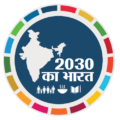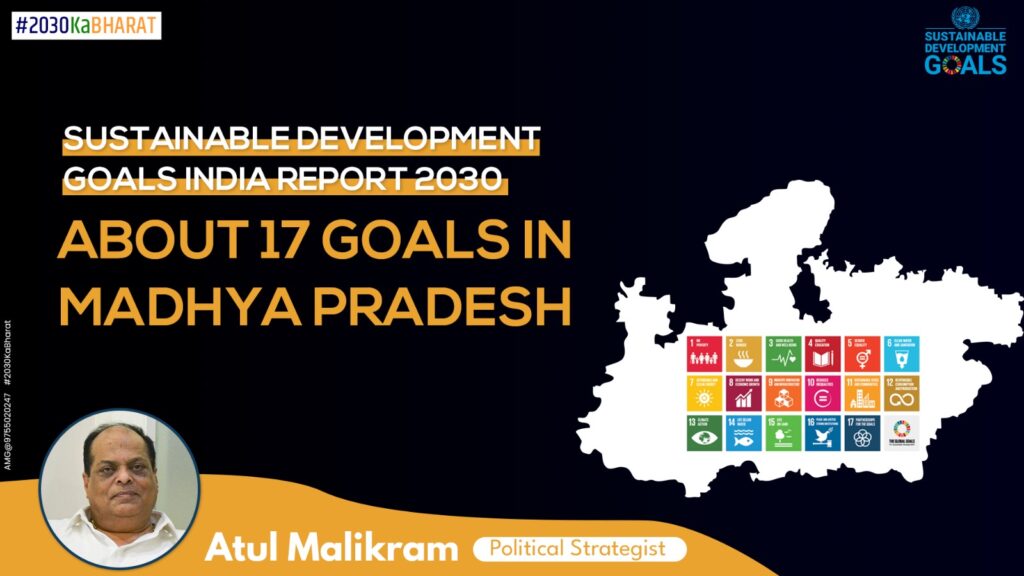Challenges Facing Madhya Pradesh
Madhya Pradesh (Sustainable Development India Report) encounters multifaceted challenges in achieving sustainable development goals. The delivery of basic amenities to the population incurs a high cost, exacerbating the struggle for social development among marginalized groups. Additionally, poverty persists due to low per capita income, further widening the rural-urban gap. This mismatch fuels migration, leading to overcrowding in cities beyond their capacity. The state grapples with deficiencies in rural and social infrastructure, coupled with agricultural crises, hindering the promised double-digit agricultural growth.
Madhya Pradesh grapples with formidable challenges, each contributing to the intricate tapestry of sustainable development hurdles. The costs associated with delivering basic amenities to the population remain disproportionately high. Social development among marginalized communities demands urgent attention. Persistent poverty, stemming from a low per capita income, poses a substantial barrier. Furthermore, the rural-urban gap continues to widen, leading to migration and overcrowding in urban centers, amplifying the strain on infrastructure.
The Imperative for Sustainable Development India Report
Against this backdrop, Madhya Pradesh aligns itself with the global sustainable development agenda, particularly the Sustainable Development India Report, which India has adopted as its guiding framework. The state endeavors to address critical issues through various strategies outlined in the SDGs.
- The Agricultural Paradox: Despite the much-touted double-digit agricultural growth, Madhya Pradesh faces an agricultural crisis. The anticipated trickle-down effect of this growth remains elusive, necessitating a closer examination of the factors at play.
- Sustainable Development Goals as a Guiding Light: In the broader context of India’s commitment to the United Nations and its adoption of the Sustainable Development Goal 2030 (SDG 2030), Madhya Pradesh aligns its developmental agenda. The SDG 2030 builds upon the anti-poverty targets of the Millennium Development Goals, providing a framework for addressing these pressing issues.
SDG 1: Eradicating Poverty
The first Sustainable Development Goal (SDG 1) focuses on the eradication of poverty. Madhya Pradesh endeavors to achieve this by promoting economic activities such as animal husbandry, advancing infrastructure and technology, fostering skill development, and creating market opportunities in the agriculture sector. Table 1 highlights the scenarios on poverty and per capita income in both Madhya Pradesh and India.

SDG 2: Zero Hunger
SDG 2 emphasizes ending hunger, achieving food security, improving nutrition, and promoting sustainable development. The status of children and food grain productivity are critical indicators. The state must address challenges such as underweight children, wasting children, severe wasting children, and stunting to achieve the targets set under SDG 2.

SDG 3: Good Health & Well-being
Ensuring healthy lives and promoting well-being for all at all ages is the essence of SDG 3. Milestones related to maternal and infant mortality rates, children’s immunization, and access to health services underscore the need for comprehensive healthcare strategies.

SDG 4: Quality Education
SDG 4 aims to ensure inclusive and equitable quality education and promote lifelong learning opportunities for all. Indicators such as literacy rates, pupil-teacher ratios, and dropout rates are essential to assess progress in achieving this goal.

SDG 5: Gender Equality
Achieving gender equality and empowering all girls is the focus of SDG 5. Metrics include the Gender-related Development Index, female literacy, and proportionate seats by women in state legislature.

SDG 6: Clean Water & Sanitation
Ensuring availability and sustainable management of water and sanitation for all, SDG 6 addresses critical issues such as drinking water availability, piped water supply coverage, and household water connections.

SDG 7: Affordable and Clean Energy
SDG 7 emphasizes access to affordable, reliable, sustainable, and modern energy for all. Targets include the percentage of renewable energy in the total energy mix, surplus power availability, and smart metering implementation.

SDG 8: Decent Work & Economic Growth
Promoting sustained, inclusive, and sustainable economic growth and full and productive employment is the essence of SDG 8. Key indicators include GSDP, workforce participation rates, and employment generation.

SDG 9: Industry, Innovation, and Infrastructure
SDG 9 focuses on building resilient infrastructure, promoting inclusive and sustainable industrialization, and fostering innovation. Targets encompass the increase in the number of registered MSMEs, investment in the MSME sector, and employment generation.

SDG 10: Reducing Inequality
Reducing inequality within and among communities is the crux of SDG 10. Key metrics include the Gini coefficient, per capita income gap between India and Madhya Pradesh, and literacy gaps.

SDG 11: Sustainable Cities and Communities
Making cities and human settlements inclusive, safe, resilient, and sustainable is the goal of SDG 11. Targets include reliable public transport systems, automated driver testing skills, and intelligent traffic management.

SDG 12: Responsible Consumption & Production
Ensuring sustainable consumption and production patterns, SDG 12, encompasses indicators like milk and meat production, crop insurance coverage, and gross domestic product.

SDG 13: Climate Action
SDG 13 emphasizes climate action, focusing on reducing greenhouse gas emissions and increasing forest cover. Targets include the reduction of greenhouse gases and expanding the forest cover.

SDG 14: Life Below Water
Conserve and sustainably use oceans, seas, and marine resources for sustainable development. Targets include available water area, utilized water area, fish seed production, fish production, and fishery exports.

SDG 15: Life on Land
Protect, restore, and promote sustainable use of terrestrial ecosystems, sustainably manage forests, combat desertification, and halt and reverse land degradation and halt biodiversity loss. Targets include forest cover, teak production, and forest wealth.

SDG 16: Peace, Justice & Strong Institutions
Promote peaceful and inclusive societies for sustainable development, provide access to justice for all, and build effective, accountable, and inclusive institutions at all levels. Targets include crime rates, road accident rates, and access to justice.

SDG 17: Partnerships for the Goals
Strengthen the means of implementation and revitalize the global partnership for sustainable development. Targets include resource mobilization, share of non-plan revenue expenditure, and developmental grants.
Sustainable Development Become Global Agenda
The Sustainable Development Goals (SDGs) have become a global agenda for creating a more sustainable and equitable future. In the context of Madhya Pradesh, the Sustainable Development India Report for 2023 provides crucial insights into the progress made towards achieving sustainable development.
The government of Madhya Pradesh has played a pivotal role in driving sustainable development and poverty reduction. Various programs aimed at providing social safety nets have contributed to the positive trend in poverty reduction. The strategic focus on ensuring sustainable and equitable development is evident in the policies implemented to eradicate poverty by 2030.
Roadmap to 2030: Steps for Sustainable Development
Madhya Pradesh’s commitment to achieving the SDG Goals is reflected in the comprehensive roadmap laid out for the next decade. The state is aligning its policies with the national agenda, focusing on inclusive development, education, healthcare, and employment generation. These steps are crucial in creating a foundation for sustainable development and lifting the remaining population out of poverty by 2030.
Addressing the sustainable development challenges in Madhya Pradesh necessitates a multi-pronged strategy, aligning with the SDGs. Policymakers, academia, civil society, and the private sector must collaborate to usher in positive change. The insights provided by Professor Ahuja offer a roadmap for the future, emphasizing the interconnectedness of economic, social, and environmental factors in the pursuit of a sustainable and equitable Madhya Pradesh.

